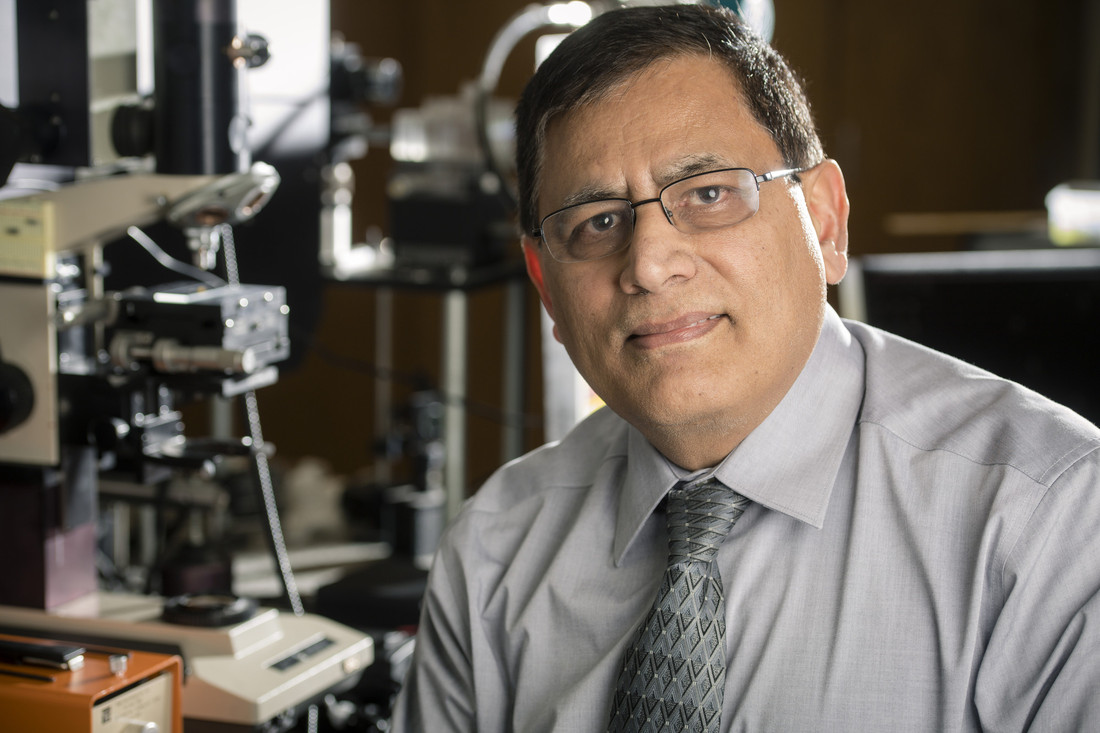 Yogesh Vohra, Ph.D.,
Yogesh Vohra, Ph.D.,
Photography: Steve WoodThe University of Alabama at Birmingham has been awarded $456,786 from the National Science Foundation to fund the development of a 3D-printed high-entropy alloy superconductor, with a goal of generating higher magnetic fields than conventional superconductors currently in use.
Yogesh Vohra, Ph.D., professor in the UAB Department of Physics and associate dean for Research and Innovation in the College of Arts and Sciences, will serve as the principal investigator with Cheng-Chien Chen, Ph.D., serving as a co-principal investigator.
“Dr. Chen and I have extensively collaborated under prior NSF awards with 10 joint publications in the past four years,” Vohra said.
Awarded via proposal, the project will study three different high-entropy alloy superconductors under high pressures and low temperatures over the course of three years.
“Superconductors play a vital role in various sectors of the United States’ economy, including energy transmission, medical imaging, magnetically confined plasma for fusion energy generation and high-speed transportation, as well as quantum computing and information technology,” Vohra said. “The fundamental understanding of unique microstructures in 3D-printed highly robust superconductors will allow us to generate high magnetic fields, which is of utmost importance for magnets used in medical imaging applications.”
 Cheng-Chien Chen, Ph.D.,
Cheng-Chien Chen, Ph.D.,
Photography: Lexi CoonHigh-entropy alloys are unique in that they contain virtually equal traces of typically five or more elements. Traditional alloys usually possess small amounts of several elements added to one base, for example, iron, nickel and cobalt.
Vohra says the project will combine the complexity of having multiple elements in an alloy with 3D-printing technology to develop the next generation of superconductors.
This research will also allow Chen and Vohra to continue to cultivate the next generation of researchers coming out of UAB through the joint mentorship of two Ph.D. students who will be supported under this award.
Vohra believes the UAB Department of Physics has had more than adequate preparation to take on a project of this magnitude due to their proven core expertise in computational and experimental studies on materials under high pressures.
“UAB has developed designer diamond technology for conducting electrical and magnetic measurements on materials under high pressures and low temperatures and that will be crucial for studies on alloy superconductors,” Vohra said.